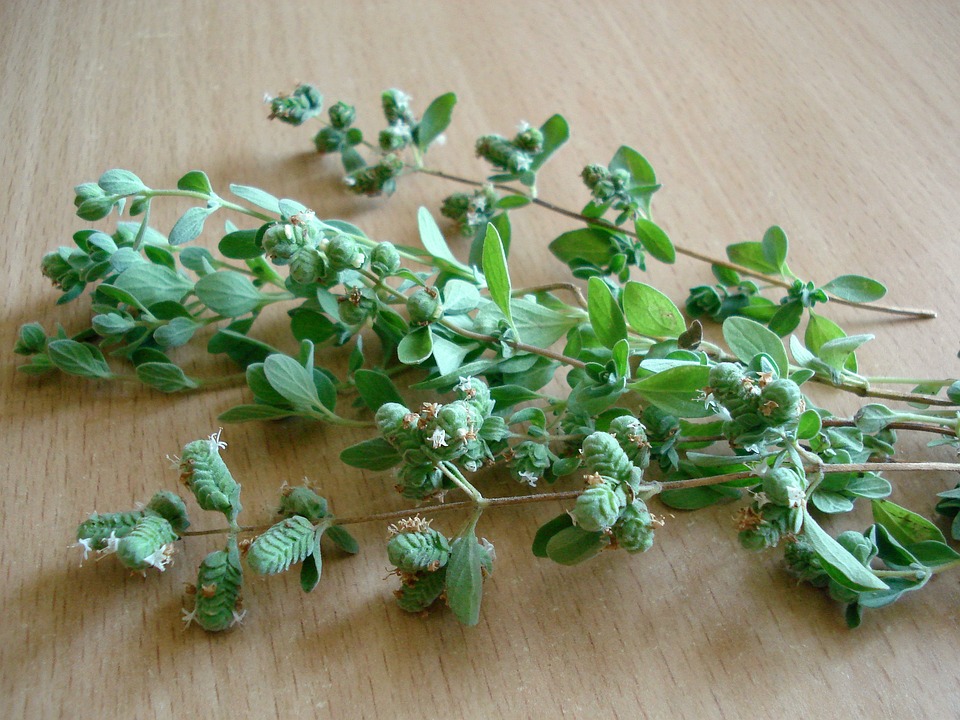Contents
- Oregano for Nerve Pain: What It Is And Why It Matters
- 7 Ways Oregano For Nerve Pain Eases Discomfort
- 1. Reduces Neuroinflammation With Potent Phytochemicals
- 2. Calms Overactive Pain Receptors
- 3. Acts As A Natural Analgesic
- 4. Supports Antioxidant Defense Around Nerves
- 5. Works Well With Conventional Therapies
- 6. Helps With Sleep And Anxiety That Amplify Pain
- 7. Provides An Accessible Option For Many People
- Using Oregano For Nerve Pain Safely And Effectively
- What The Research And Experts Say
- Practical Stories: How Real People Use Oregano For Nerve Pain
- Concise Protocol: A Simple Routine To Try
- Bottom Line
- FAQ
Oregano for Nerve Pain: What It Is And Why It Matters
Oregano for nerve pain is more than a kitchen herb tossed on roast chicken. It’s a concentrated natural remedy—usually in the form of oregano essential oil or extracts—whose active compounds like carvacrol and thymol have shown real biological effects. If your nerves sting, burn, or tingle, understanding how oregano for nerve pain can reduce inflammation, calm hyperactive nerve signals, and give you back practical comfort matters to your daily life.
I’m not handing you fairy dust. I’m handing you clear, usable ways to try oregano for nerve pain, rooted in science, seasoned with practical tips, and written like a woman who wants you to feel better tonight.
7 Ways Oregano For Nerve Pain Eases Discomfort
1. Reduces Neuroinflammation With Potent Phytochemicals
Start here: inflammation feeds nerve pain. The powerhouse compound in oregano, carvacrol, has documented anti-inflammatory effects. Researchers studying essential oils report that carvacrol can block inflammatory pathways that amplify nerve damage and pain signals. When you choose oregano for nerve pain, you’re choosing a botanical that targets the inflammation behind the burning and shooting sensations.
Apply this: dilute oregano oil and use as a short-term topical adjunct (more on dilution below). Many people notice a decrease in swelling and tenderness within days when used responsibly.
2. Calms Overactive Pain Receptors
Nerves keep firing long after injury heals. Oregano’s compounds interact with pain receptors and ion channels that modulate nerve firing. Laboratory work shows that these phytochemicals can dampen hyperexcitability in peripheral nerves, which directly reduces the shocks and twinges you feel.
Practical tip: coupling diluted oregano with a base oil like jojoba or coconut creates a soothing massage blend you can use over sore areas. The massage itself boosts circulation and helps the active molecules reach tissues that hurt.
3. Acts As A Natural Analgesic
If you want pain relief without starting at the pharmacy, oregano for nerve pain can be an ally. Animal and laboratory research into carvacrol and related compounds demonstrates measurable analgesic effects—meaning less perceived pain after application. This is not a promise of cure, but it is a practical, hands-on way to lower day-to-day discomfort.
How to use: for localized neuropathic pain, apply a carefully diluted oil for topical relief. Oral supplements exist, but you should consult an expert before taking concentrated oregano internally.
4. Supports Antioxidant Defense Around Nerves
Oxidative stress damages nerves and worsens neuropathy. Oregano’s antioxidants help mop up harmful free radicals and protect nerve cells from ongoing damage. When you choose oregano for nerve pain, you’re asking your body to defend itself more effectively.
Combine strategies: add antioxidant-rich foods—berries, leafy greens, walnuts—alongside topical oregano treatments for a two-pronged approach to nerve health.
5. Works Well With Conventional Therapies
You don’t have to choose between oregano and your doctor’s plan. Oregano for nerve pain can be complementary. Studies on integrative pain management show that topical botanicals plus physical therapy or medication often enhance overall pain control and reduce the need for higher drug doses.
Speak plainly with your clinician. Tell them you’re using oregano so they can watch for interactions and tailor your plan safely.
6. Helps With Sleep And Anxiety That Amplify Pain
Nerve pain isn’t just physical; it hijacks sleep and mood. When your nights are broken, your pain tolerance drops. Aromatherapy with diluted oregano, used in a diffuser for short sessions or added sparingly to a carrier oil, can create a calming routine. While oregano isn’t a sedative in the classic sense, easing pain and reducing anxious focus on symptoms improves sleep, which in turn lowers pain perception.
Use caution: essential oils can be stimulating for some. Test a small amount and watch how your body responds.
7. Provides An Accessible Option For Many People
Oregano is widely available, affordable, and familiar. That matters. Accessibility means more people can experiment safely and find relief. When you pick oregano for nerve pain, you’re choosing a remedy that fits into kitchens, medicine cabinets, and self-care rituals.
Buy wisely: choose therapeutic-grade oils from reputable suppliers, check ingredient lists, and avoid blends with unknown additives.
Using Oregano For Nerve Pain Safely And Effectively
Choose The Right Form
Oregano comes as fresh leaves, dried herb, essential oil, and standardized supplements. For nerve pain, essential oil and standardized extracts are most commonly used because they contain concentrated carvacrol and thymol. Fresh oregano on your salad is wonderful for health, but it won’t replace a targeted topical or supplement.
Dilution Is Non-Negotiable
Essential oils are potent. Dilute oregano oil to 1–2% in a carrier oil for topical use—about 6–12 drops per ounce of carrier oil. Apply to a small test patch first. If you feel burning or irritation, stop immediately. For people with sensitive skin, start lower.
Mixing And Application Tips
- Combine diluted oregano with soothing carriers: jojoba, sweet almond, or fractionated coconut oil.
- Use gentle massage for five minutes, once or twice daily over painful areas.
- If using in a diffuser, limit sessions to 10–15 minutes and avoid prolonged exposure.
When Not To Use It
Do not apply undiluted oregano oil. Avoid internal use unless guided by a qualified practitioner. If you’re pregnant, breastfeeding, or on certain medications, talk with a clinician first. If pain worsens or you develop allergic symptoms, stop immediately and seek care.
What The Research And Experts Say
Researchers studying oregano’s active compounds emphasize anti-inflammatory, antioxidant, and analgesic properties. Reviews in pharmacology journals describe carvacrol as a molecule with multi-target activity that can reduce inflammatory markers and nerve excitability. Pain specialists and integrative medicine practitioners often consider topical botanical approaches as adjunctive treatments—especially for localized neuropathic symptoms where systemic medication side effects are problematic.
Readability matters: these findings don’t promise instant cure, but they do support oregano for nerve pain as a scientifically plausible, low-risk complement to established care.
Practical Stories: How Real People Use Oregano For Nerve Pain
One woman with diabetic neuropathy told me she began using a 1% oregano oil blend nightly on her calves and feet. Within two weeks, she reported fewer midnight shocks and could walk longer without stopping. Another patient combined massage with diluted oregano and a low-dose topical lidocaine prescribed by her clinician, and she lowered her oral pain medication over three months under supervision.
These are individual experiences, not guarantees. They are, however, the kind of everyday wins that matter.
Concise Protocol: A Simple Routine To Try
- Test first: one drop of diluted oil on the inner forearm for 24 hours.
- Start: mix 6 drops oregano oil into 1 ounce (30 ml) of carrier oil for a 1% dilution.
- Apply: massage 1–2 times daily for up to 5 minutes on the painful area.
- Track: keep a simple diary—pain levels, sleep, side effects—for two weeks.
- Consult: show your diary to a clinician to refine care.
Bottom Line
Oregano for nerve pain is an honest, science-backed tool you can add to your pain toolkit. It reduces inflammation, calms nerve firing, offers topical analgesia, and supports antioxidant defenses. Use it diluted, alongside professional guidance, and keep realistic expectations. When used responsibly, oregano for nerve pain can ease the daily grind of neuropathy and restore small freedoms—walking farther, sleeping deeper, worrying less.
Be bold: try it carefully, track your results, and partner with your healthcare team.
FAQ
Is oregano safe to put on my skin every day?
With proper dilution (1–2% in a carrier oil) many people use oregano topically daily for short stretches. Always patch-test first and stop if you see irritation or burning.
Can I take oregano oil orally for nerve pain?
Internal use is more complicated and should only be done under the care of a qualified practitioner. Potent extracts can interact with medications and upset digestion.
How quickly will oregano for nerve pain work?
Some people notice relief within days; others need weeks. Track symptoms for two weeks to assess whether it’s helping you.
Will oregano replace my prescribed neuropathy medicine?
No. Oregano is an adjunct. Do not stop prescribed medications without talking to your clinician.
References
National Institute of Neurological Disorders and Stroke provides an overview of neuropathic pain and management strategies (http://www.ninds.nih.gov/health-information/disorders/neuropathic-pain).
The Mayo Clinic discusses essential oils and safety considerations including topical use and dilution guidance (http://www.mayoclinic.org/healthy-lifestyle/consumer-health/in-depth/essential-oils/art-20046403).
PubMed search results list scientific studies on carvacrol, the active compound in oregano oil, and its analgesic and anti-inflammatory effects (http://www.pubmed.ncbi.nlm.nih.gov/?term=carvacrol+analgesic).
The Cleveland Clinic offers patient-focused resources on neuropathic pain causes, symptoms, and treatment options to discuss with your healthcare team (http://my.clevelandclinic.org/health/diseases/17574-neuropathic-pain).








